Did you know the number of daily emails sent and received in 2020 reached 306 billion?
That's a lot! And you know what will drive you crazier?
The users are projected to reach 4.3 billion in 2023. That's almost half of the world's population!
Imagine... billions of people can come across your brand online.
That's why it's important for you, as a business owner, to use ecommerce email marketing strategies.
Because your customers might want to receive emails from your ecommerce store...
Great emails that they'd want to click and take action on.
And emails with offers that are impossible to ignore.
Who wants those?
I do. We do—even your customers.
So, make sure that your emails stand out.
Make them eye-catching.
But before we get to the cherry on top... let's discuss some basics first to prep you.
Table of Contents
-
What is Ecommerce Email Marketing?
-
Benefits Of Ecommerce Email Marketing
-
What Are The 5 Steps Of Email Marketing?
-
Research About Ecommerce Email Marketing
-
Create Your Email Marketing Strategy
-
Find The Best Email Marketing Software
-
Grow And Manage Your Email List
-
How To Craft An Effective Email?
-
Analyze And Optimize Your Campaigns
What is Ecommerce Email Marketing?
Email marketing is the use of email to promote your products or services.
It's not just used to promote, though.
Because here's the best part... You can build and nurture the relationships you have with your customers.
Does it sound exciting? Let's see more benefits of ecommerce email marketing!
Benefits Of Ecommerce Email Marketing
- You can personalize the emails you send to your subscribers.
- Connecting with your customers is easier.
- There's a return on investment of $36 for every $1 you spend on email marketing campaigns.
These are just 3 out of many benefits of email marketing. And this just proves it's such an effective marketing strategy, right?
So, you're probably wondering now...
What Are The 5 Steps Of Email Marketing?
And this is what we're about to discuss...
You're going to know these 5 steps you need to create a great ecommerce email marketing strategy:
Step 1: Research About Ecommerce Email Marketing
Step 2: Create Yout Ecommerce Email Marketing Strategy
Step 3: Find The Best Email Marketing Tool
Step 4: Grow And Manage Your Email List
Step 5: Analyze And Optimize Your Strategy
Think that's all? Stay tuned because you're also going to learn how to craft the perfect email later. ?
These steps will help you win that click!
Now, can we skip to the good part?
Research About Ecommerce Email Marketing

If the question "how do I start an ecommerce email marketing?" is brewing in your mind...
Well, you need to research email marketing first before you fire away.
Because there are many things about email marketing that need your attention before implementing them.
And one of them is...
Email Regulations
Email marketing is not just sending emails to your subscribers. There's more to it, including being aware of the email regulations to protect your business.
Yep, you read it right.
There are regulations when it comes to emails that you need to comply with.
1. CAN-SPAM Act
CAN-SPAM Act or Controlling the Assault of Non-Solicited Pornography And Marketing is a law in 2003 passed in the United States.
It's a law that gives email subscribers or recipients the right to have businesses stop sending them emails. Hence, it requires businesses to provide them with the option. Otherwise, there will be penalties.
To sum it up, it's a national standard that regulates unwanted or spam commercial emails.
And to make sure you are complying with the law...
Here are some things you need to remember when implementing your ecommerce email marketing strategies:
- Don't use misleading headers. This means your "From," "To," "Reply-To," as well as the routing information, should be accurate. You need to identify your business if you're the sender.
- Don't use deceiving subject lines. Your subject lines should be able to show what the email is about.
- State if it's an ad. If you're sending an advertisement to your subscribers, you need to disclose it in your email.
- Show your location. You need to include your business address when sending emails. Usually, this is placed at the bottom of each email.
- Have an opt-out option. Remember, the purpose of the CAN-SPAM Act is to protect your recipients from unwanted commercial emails. So, you need to have an accessible opt-out button.
- Remove opt-outs from your list immediately. To be CAN-SPAM compliant, you need to remove opt-outs within 1- business day. Once they unsubscribe from your emails, you are prohibited from using their email.
- Monitor your campaigns. This is important especially if you're working with a third-party agency. Don't let them do all the work. You also need to make sure your company is complying with the law.
When creating your ecommerce email marketing strategies, don't forget to look at the legal side to protect your business.
And speaking of which, here's another one you need to take note of...
2. GDPR
GDPR or General Data Protection Regulation is a regulation to protect the data of EU (European Union) citizens.
This has an impact on your email marketing strategies because it affects how you obtain consent. This is important to comply with because there will be penalties if you fail to do so.
So, here are some things you can do to avoid it.
- Revisit your database. Identify the locations of your subscribers (if possible) and note how did you obtain their emails in the first place.
- Have a Privacy Policy on your website. Be clear about using, processing, or storing your subscribers' data. Shopify has a Privacy Policy Generator that's GDPR compliant.
- Be proactive. Make sure your ecommerce email marketing strategies comply with the law instead of being reactive when things go south.
These are just a few tips. But if you want to see how your business can be more GDPR and CAN-SPAM compliant, you need to consult an expert or lawyer for legal advice.
But aside from these regulations, you need to know...
What Are The 4 Types Of Email Marketing You Need To Learn?
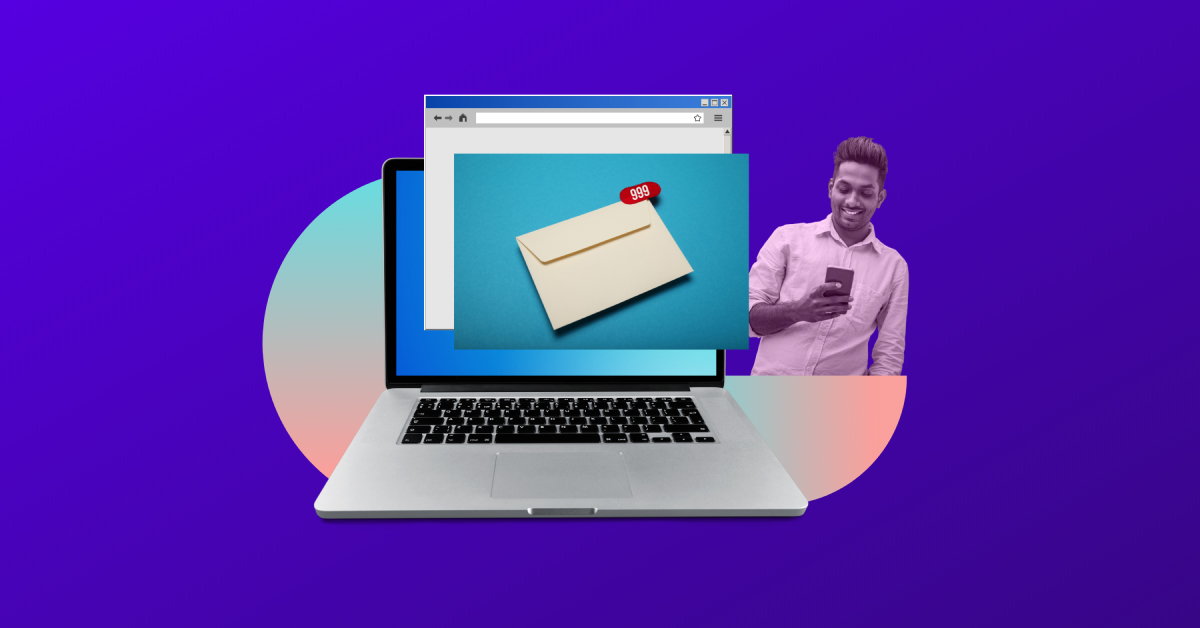
So, before you create your ecommerce email marketing strategy... why not learn the 4 common types of email marketing to choose from?
1. Welcome Emails
Welcome emails are the first emails you can send to your new subscribers. These are sent right after they sign up to your email list.
So, why is this useful for your brand?
It's because welcome emails have 91.43% open rates!
And this is the first step to building a relationship and connecting with them. So, you can start by thanking them!
But sometimes, you can even include a "welcome packet" or freebies to have them open your next email campaigns.
Another email marketing type you can try is...
2. Promotional Emails
Promotional emails are great for spreading the word about your deals.
For example, if you have an upcoming sale or discounts going on... promotional emails are perfect for enticing your customers to purchase.
As I said above, there are different stages of a buyer's journey. So, this might effectively lead your prospects down to the conversion stage.
The next type of email you might want to try is...
3. Newsletters
Newsletters are used to share relevant information with your subscribers.
It can be about anything, really. You can share personal stories, company news, promote current campaigns... whatever you like. As long as it's relevant to your business and subscribers.
As compared to other types of emails, newsletters are typically scheduled. Some companies send them out once a week... or sometimes, once a month.
Also, newsletters can help in building and nurturing relationships rather than selling.
And last but not least...
4. Retention Emails
Customer retention is crucial in your business.
Why? Because retention emails can help you nurture your relationships with your clients.
You can send them automated birthday emails. Or, any other celebration with exciting offers.
These will help ensure that your customers will not opt-out of receiving your emails. You can send exclusive promos or special offers to keep them.
Sounds exciting, right?
So, after your research... I'm sure you already want to get to the next part! 😉
Create Your Email Marketing Strategy

Now, after learning the email regulations and some types of email marketing campaigns you can send out. Let's create your email marketing strategy!
First, you need to:
Plan Your Email Automation Workflows
Having email automation workflows in place makes it easier for you to achieve your email marketing goals.
But first, what is this?
An email automation workflow is emails triggered by your subscribers' actions. For example, it can be when they sign up to your email list, purchase a product, or abandon their carts.
And let me tell you why this should be a part of your email marketing strategy:
- It allows you to track the actions of your email subscribers.
- It requires less of your time since you don't have to do it manually.
- The emails you're sending are relevant because they're based on the buying stage of your subscribers or customers.
See? Now, the only thing you need to do is find the email automation tool that works best for your ecommerce store.
And speaking of which...
Set Your Goal
Every ecommerce email marketing strategy needs a goal.
Why? Because this will help you figure out the steps you need to take based on what you want to achieve. And you can also measure the success of your campaign.
But remember, your goals should be SMART—Specific, Measurable, Attainable, Relevant, and Time-bound.
Having SMART goals will help you not go overboard with your planning and set realistic expectations. This way, you won't think your campaign will fail if you don't achieve your goals on the first try.
So, here are some goals you can set when creating your ecommerce email marketing strategies:
Conversion
Conversion is a common goal for email marketing. That's why if you remember, promotional emails are one of the most common types of emails.
Hence, if your goal is conversion... you have to think of a strategy that could lead your subscribers to be paying customers.
Let's look at some ways to convert your subscribers into customers:
- Use a Call-To-Action
- Offer Discounts
- Write An Effective Email Copy
Well, you don't have to worry because actionable tips are waiting for you at the end of this guide! 😉
But another goal is...
Retention
Customer retention is essential in your ecommerce store. I mean, have you heard that retention is cheaper than acquiring new ones?
Fret not, because the good news is...
Through email marketing, customer retention is possible. Yep, you can definitely nurture your relationship with your customers by sending them well-written emails!
So, here are a few ideas to get you started:
- Send them follow-up emails
- Send newsletters
- Give them exclusive offers
And another goal you can have is...
High Open Rate
Open rate is the average number of users who opened your specific email.
This is an important goal to set because before you can convert or retain your customers... you need them to open your emails first. Right?
To achieve a high open-rate on your first or next campaign, these are a few things to focus on:
- Have an enticing header
- Think of a strong subject line
- Make clear and concise preview text
Wondering how to do all these? You'll learn more later!
But for now, you need this to achieve your goals...
Define Your Audience
You've heard this a lot of times, for sure.
But always take note of this when making decisions or implementing strategies in your business. I mean, the emails you're sending would be for your customers, right?
And defining your audience helps you identify which strategies to use.
Since there are different types of emails and goals per campaign, you also need to identify which buyer stage they're at.
Aside from this reason, defining your audience will help you understand them. And this will allow you to craft the email they're going to enjoy.
Here are some ways that would help you:
- Create a buyer persona. This will help you specify the type of target market or audience you have. Based on their personalities, lifestyle, etc... you can craft the perfect email marketing strategy.
- Review your customer database. Try to take a look at the type of customers you currently have. Or see what they have been purchasing. It might help in brainstorming your first or next email marketing campaign or special offers!
- Check your analytics. If you've already tried email marketing before, you might want to check how your previous campaign went.
After you understand your audience, it's time to...
Find The Best Email Marketing Software

After creating your strategy, you need the email marketing software that would work well with it.
But before you find some suggestions below, you need to establish criteria.
Email Marketing Software Tools
1. Klaviyo
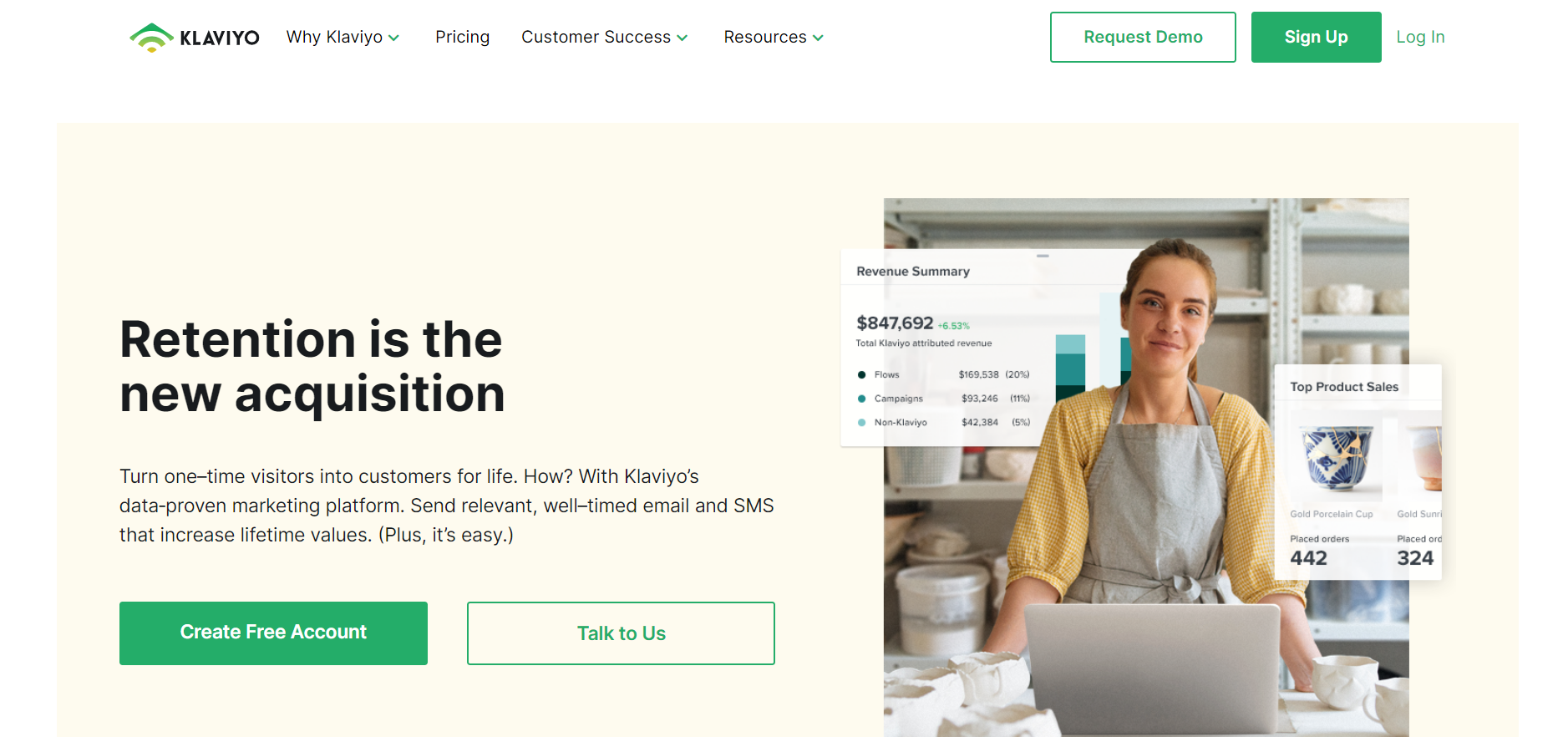
Klaviyo is an email marketing software you can find on the Shopify apps.
It's an email automation app that's the leading email marketing software in the Shopify app. In fact, it has over 265,000 Shopify users!
This just proves that Klaviyo is a great automation tool.
But what makes it great?
- Flexible Options. If you don't have many subscribers, you're good with the free option. But if you have more than 250 subscribers and need to send more than 500 emails, you can upgrade your plan. It depends on what you need.
- Templates and forms. Everything is more accessible with their pre-built templates and forms! This will save your time, for sure.
- Segmentation. You can avoid sending irrelevant emails to your subscribers because you can send emails based on how they interacted with your brand.
Klaviyo is a great option, right? Luckily, if you're using the Debutify theme, you can integrate Klaviyo into it!
Now, let's see the next one.
2. Mailchimp
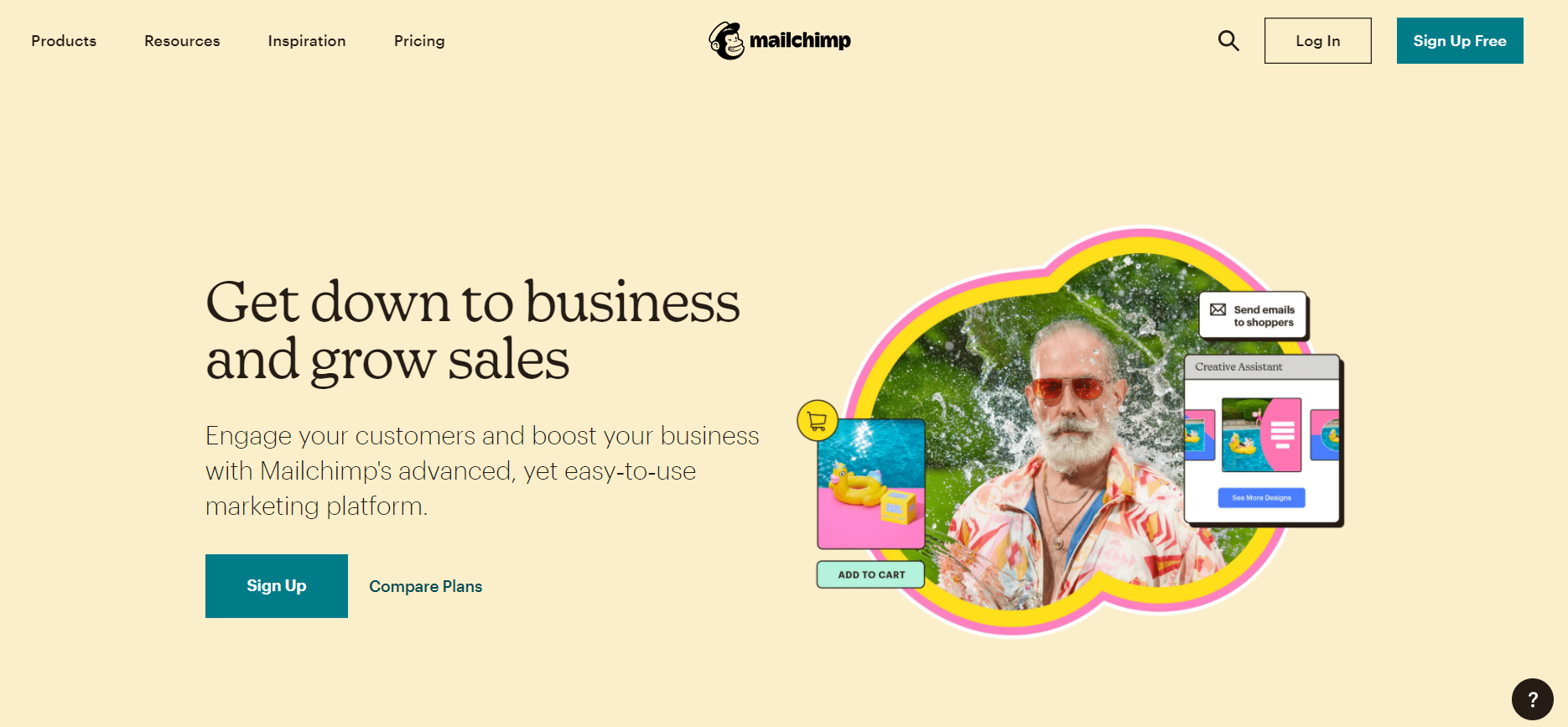
Mailchimp is also a robust email marketing software you can use to promote your online store. But unlike others, this is web-based. You don't need to install anything, which is convenient.
So, let's see some of its features.
- Flexible pricing plans. Mailchimp is free as long as you have 2,000 or fewer subscribers. If more than that, you need to pay already.
- 24/7 email and chat support. Experiencing problems? Well, they can accommodate you any time of the day!
- Landing page template. Surprise! Creating a landing page isn't hard because Mailchimp has got you covered!
These are just 3 of the many benefits you can use in Mailchimp. Another is...
3. ActiveCampaign
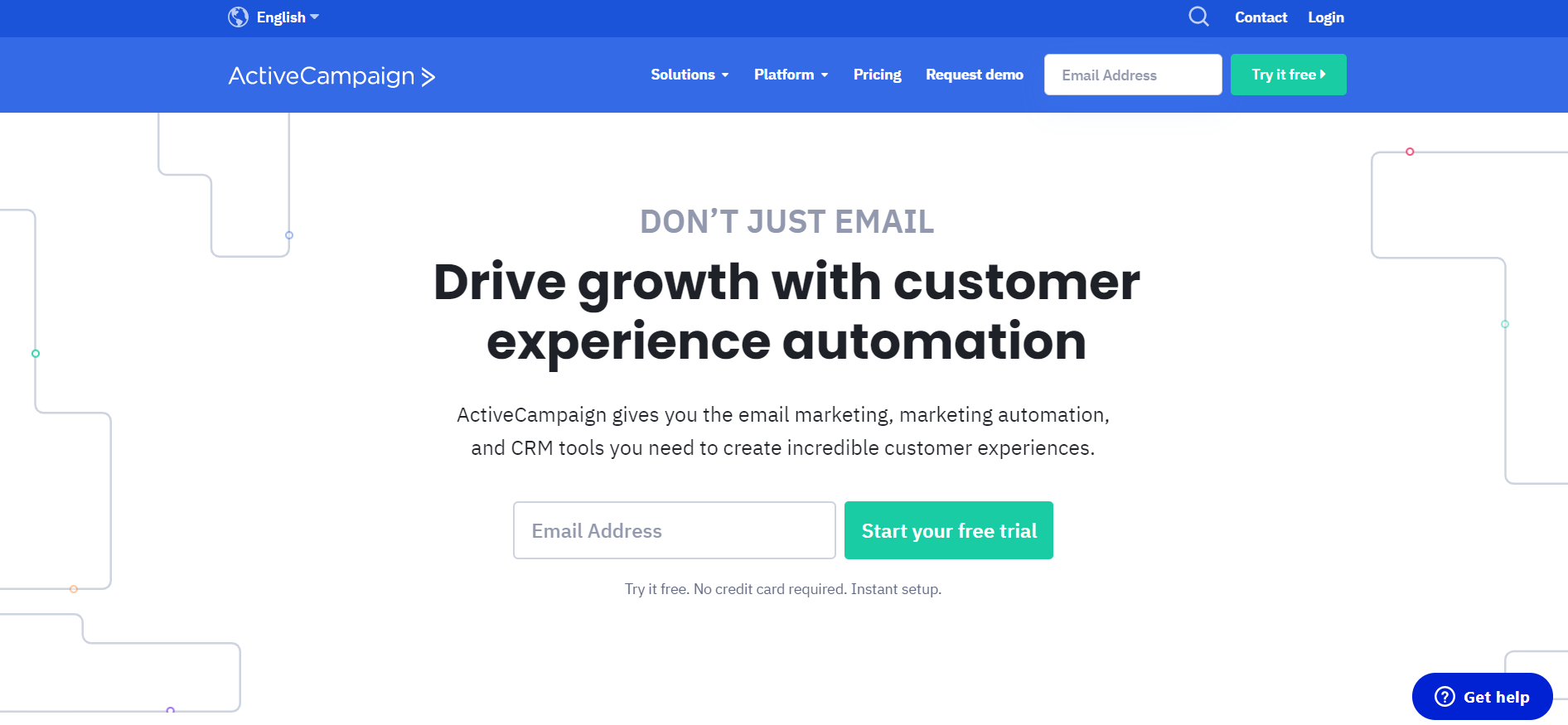
ActiveCampaign is not just an email marketing platform... it can also be a CRM (Customer Relationship Management) and Sales software!
Here are some things you can get on ActiveCampaign.
- 125+ Email templates. Writing and designing your emails wouldn't take much time because of ActiveCampaign's templates.
- Email and Automation Reporting. Every ecommerce store needs to see reports of their campaign, right? So, this is a very feature you need when choosing email automation software.
- Landing page templates. As I said above, you need a captivating landing page. And thankfully, ActiveCampaign has landing page templates you can use!
These features are incredible, don't you think? Let's see the next one!
4. Shopify Email
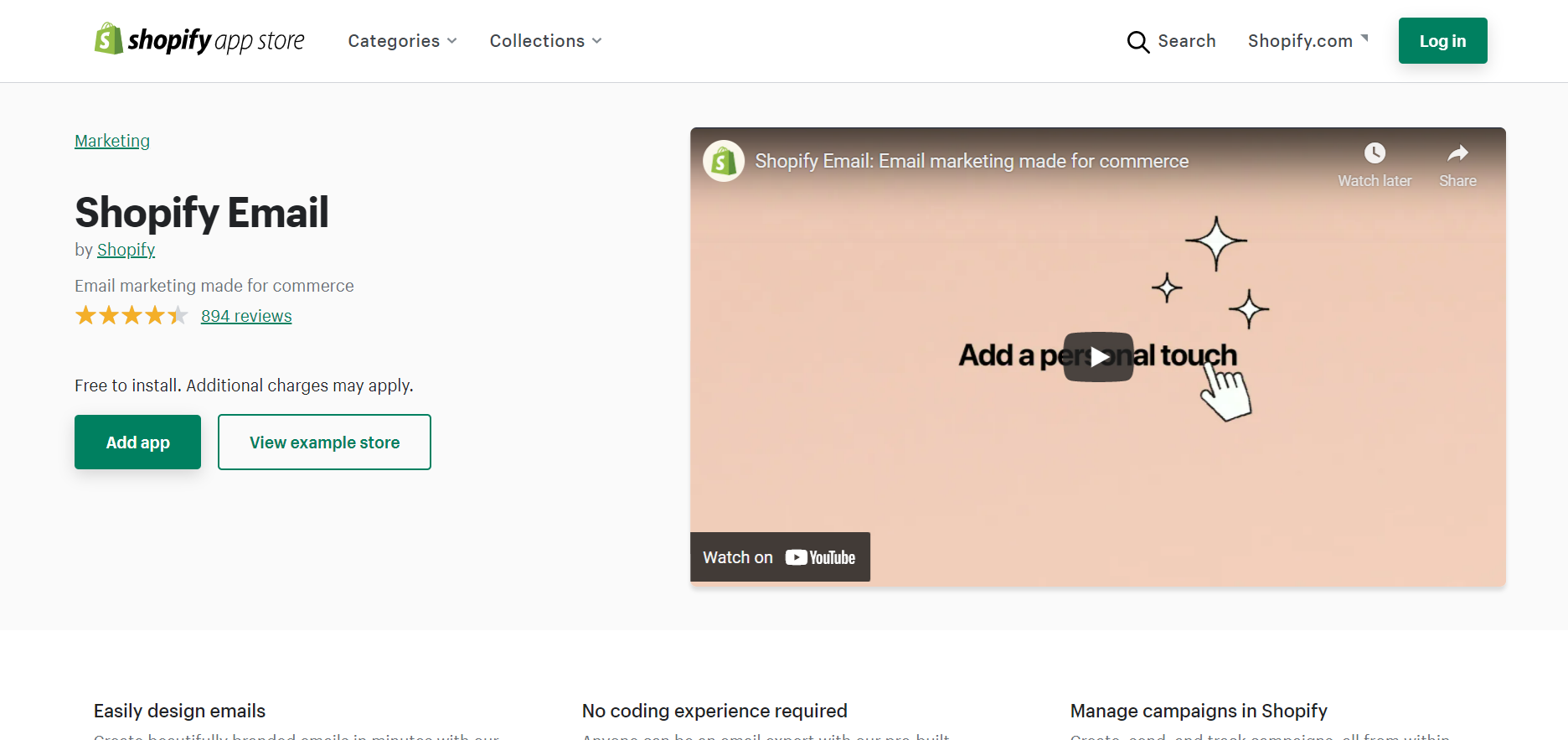
If you're using Shopify, you might want to give Shopify Email a try. It's Shopify's very own email marketing tool.
And this app allows you to:
- Customize your emails. You can easily customize your email and edit buttons, layout, images, etc. It's all according to your liking!
- Schedule an email. Yep, you can schedule an email and send it whenever you like. So, if you want to send an email at midnight, you can get your much-needed sleep. 😴
- Track your progress. You can see your open and click-through rates with Shopify Email. Not only that, but you can also see the products your customers added to their carts and their purchases.
But here's the best part...
You get 2,500 emails for free each month. And you just have to pay $1 for every 1,000 emails once you exceed that.
Yep, there is no commitment. But you can access all features!
Sounds impressive, right?
5. ConvertKit
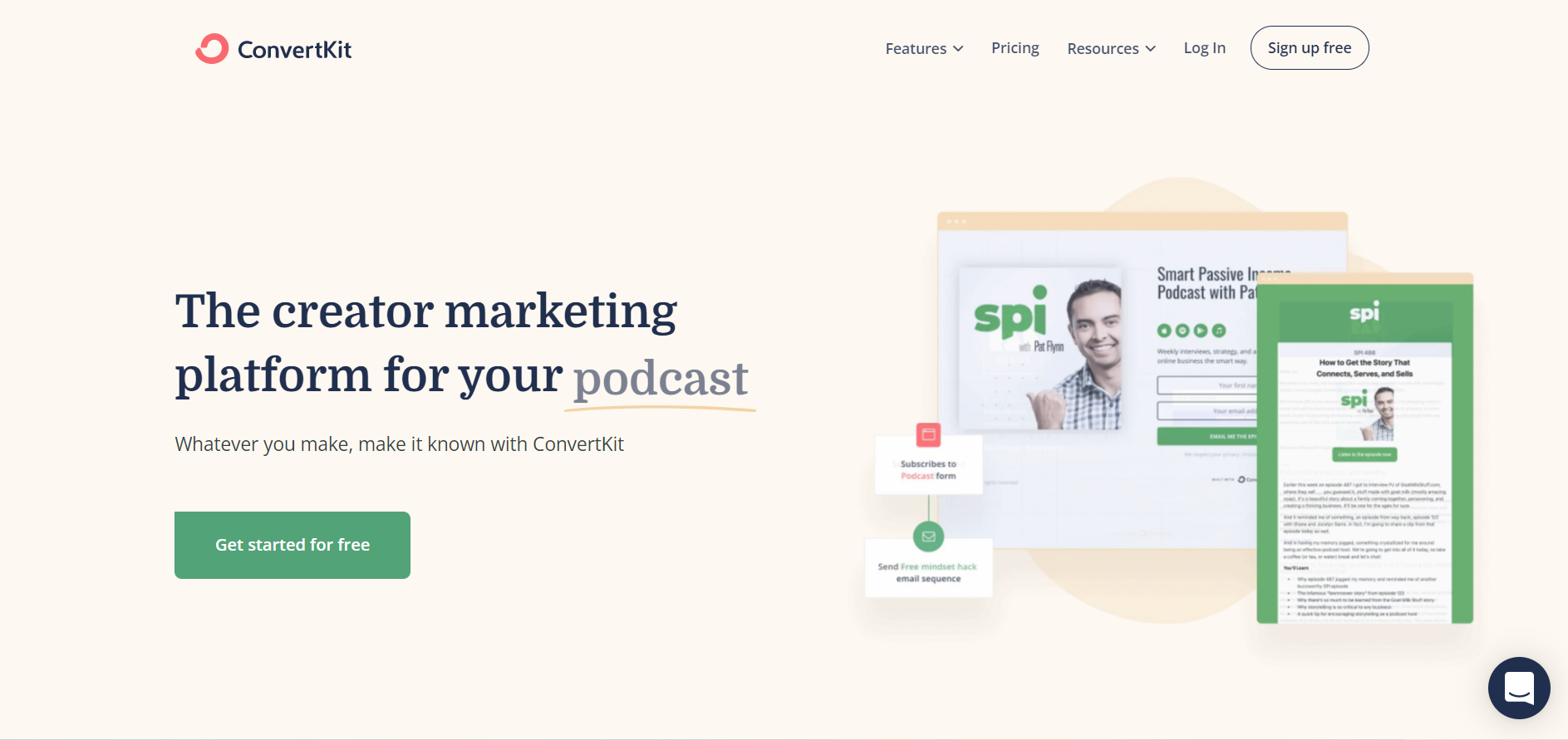
ConvertKit is another email marketing tool you might want to consider. It's incredible because it works with whatever purpose you have in mind.
This includes:
- Branded email templates. Branding is one way to enhance your online presence, even through email! This is great if you want your subscribers to know who you are by the design of your email!
- Automated emails. Not just that. But they are based on subscribers' journeys! Remember, relevant emails are a must.
- Landing pages. If you want to capture more emails, having a great and effective landing page is one way. Good thing you can have your own landing page with ConvertKit!
Choosing the best email marketing software is crucial because you need to find what's good for your online business.
You need email marketing tools that will help you reach your goals.
And speaking of goals... growing your list should be one of them. So, this leads us to Step 4.
What To Look For In An Email Marketing Software?
Take note: Your Email marketing software should cater to your needs.
You don't want to pay a dime for services you don't need or won't satisfy your ecommerce store, right?
So, here are some things you need to consider when choosing an email marketing software:
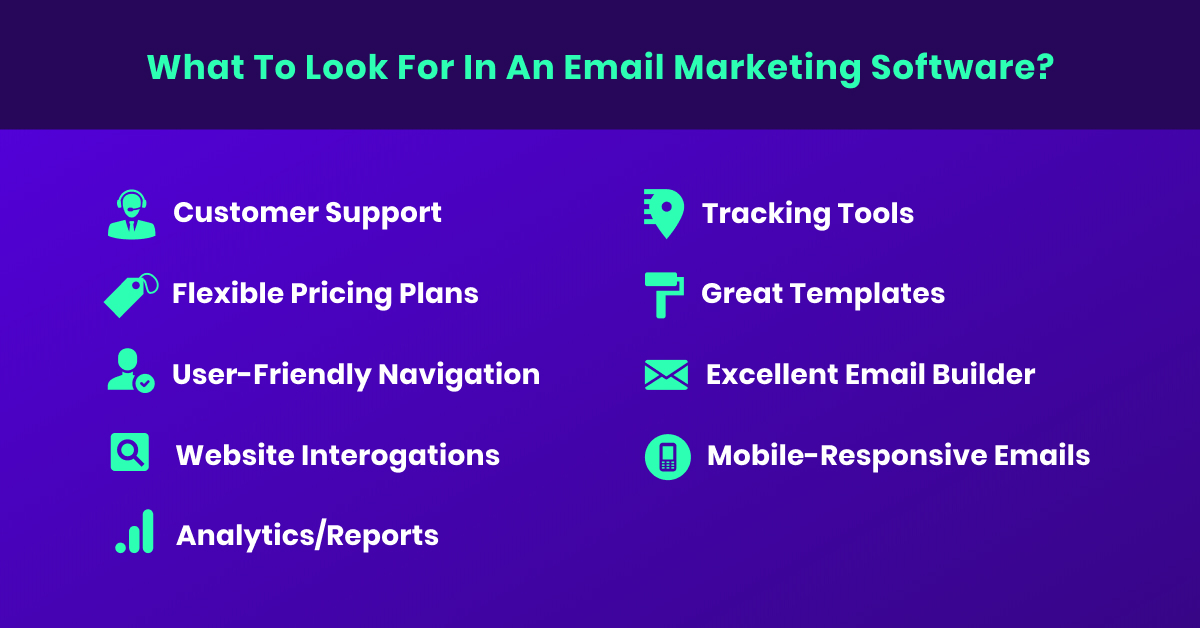
- Customer Support
- Flexible Pricing Plans
- User-Friendly Navigation
- Website Integrations
- Analytics/Reports
- Tracking Tools
- Great Templates
- Excellent Email Builder
- Mobile-Responsive Emails
That's a lot to look for, right?
But no worries, because there are lots of email marketing tools to choose from and we've narrowed it down to five to make your lives easier.
Grow And Manage Your Email List

After finding your best email marketing software, you need to get your subscribers.
They are the recipients of your email. It would be a waste of email marketing strategies without them... am I right? ?
Segment Your Email List
After you capture their emails, it's time for email segmentation!
But first, what is it?
Email segmentation is categorizing your email subscribers based on their criteria. This is helpful in personalization the emails you'll send.
It's also helpful in sending relevant emails to your subscribers because you can see their location, interests, previous interactions, and likes.
I mean... did you know that 82% of marketers found an increase of open rates by personalizing emails?
That proves email segmentation is vital in sending your subscribers the emails that fit their needs.
So, here are some email segmentation tips you can use before launching a campaign!
1. New Subscribers
After a subscriber signs up, you can send them a welcome email.
Remember, target segmentation allows you to send relevant emails based on the status of your subscribers.
So, if they're new subscribers, sending them a welcome email first instead of a promotional one would make sense.
2. Open Rate
Some of your subscribers love receiving and reading your emails.
Usually, you can see the open rate of your subscribers on your reports. It depends on what email marketing software you're using.
That's why you can give these subscribers special offers because they are most likely to open and engage with your emails.
3. Shopping Cart Abandonment
Don't worry. Other ecommerce businesses are also experiencing cart abandonment. Not just you!
But the good thing is, through segmenting your email list... you can reach customers who abandoned their cart before purchasing.
You can send them follow-up emails to remind them of their unfinished transactions!
4. Buyer Stage
Your sales funnel should be put to use in your email marketing, too.
Because depending on the stage your buyers are at, you need to send emails that fit their current status.
For example, if they're not yet convinced to buy... you can try sending emails that would entice them to purchase. The key here is to personalize the email based on their needs.
5. Gender
Speaking of personalization... segmenting your email list by gender would be an advantage.
This will help you send emails and promote the right products they would love based on their gender and preferences.
So, this is the best in making sure your subscribers would consider purchasing because they like your suggestions!
Now you already know how to grow and manage your list, you need to learn how to...
Grow Your Email Subscribers
For Step 4 in creating your ecommerce email marketing strategy, you will learn three ways to get subscribers to your online store.
You can achieve this by starting to...
1. Optimize Your Ecommerce Website
Don't underestimate the power of acquiring emails through your ecommerce site! Because you can be successful at this.
A way to do this is by adding a Newsletter popup to your ecommerce store. This will make it easier for your website visitors to sign up.
But heads up...
Don't scare your potential customers away! Your welcome popups shouldn't drive your visitors away from your website. It needs to be welcoming so they would sign up.
Just remember, make it easy to subscribe. Don't ask for too much information. They might not answer. Keep it simple to grow your list.
Pro tip: If you're using the Debutify theme, it's easy to add a Newsletter popup on your website! It's highly customizable, too.

Debutify Newsletter Pop-Up Add-On
Next is...
2. Social Media Posts
When you're posting about your products... why not promote subscribing to your email list, right?
But make sure to have an enticing landing page! This will increase your chances of having more subscribers.
And here are other ways:
- Conduct giveaways. If you want to spice it up... you can even conduct a giveaway and make subscribing to your email list a requirement to win!
- Utilize Facebook groups. Joining Facebook groups would lead you to the right subscribers. Why? Because you're going to find the right group and community to enter your email list.
- Social media ads. With the proper targeting, you can promote your email list and capture the emails of relevant people interested in your brand!
- Promote your exclusive offers. Entice your audience by promoting your exclusive offers if they sign up to your email list!
- Use Stories feature. Who says you can't take advantage of Stories in growing your email list? Of course, you can use this, too! Make sure to post compelling images or behind the scenes to attract them.
These are fantastic tips. You can do so many things on social media that will benefit your ecommerce email marketing game.
And last but not least...
3. Lead Magnets
Lead magnets are freebies you can give to your customers to make them subscribe to your email list. This is a way to capture "leads," hence it's called lead magnets.
Look, this may come in many ways...
- Checklist
- Special Offers
- Free ebooks
- Templates
- Webinars
These are just a few out of many lead magnets you can try. But the primary purpose of lead magnets is to capture their emails and give them something valuable in return.
Win-win situation!
So, what are you going to do next?
How To Craft An Effective Email?

To make an excellent ecommerce email marketing strategy... it's essential to write effective email content to encourage your subscribers to take your desired action.
And these tips will help you craft that email...
1. Find The Right Timing
The timing of your email is critical. You need to find the right time to send your emails to make sure your subscribers will notice them.
So, when is the best time to send emails?
This is where knowing your audience and analyzing your insights come into play. Because if you know your audience, you can determine their routines according to your buyer persona.
But according to the analysis of Moosend, Thursday has the highest open rate on weekdays followed by Tuesday.
And as for the time, 8-9 AM works well. But after 6 PM, the open rates started to decline.
See? The timing of your email is crucial in having high open rates. Make sure to conduct research and define your audience to know more.
Another tip is...
2. Use A Great Subject Line
If you want to have a high open-rate, make sure you have a great subject line. Why? Because that's one of the first things your subscribers will see upon receiving your email.
So, how can you write an effective subject line?
- Don't be misleading. If the content of your email doesn't match the subject line, it might be off-putting to your subscribers. Make sure they wouldn't want to unsubscribe to your email list!
- Capture their attention. To have a high open-rate, you need to capture the attention of your subscribers so they will notice your email. Use enticing words to pull this off.
- Avoid spammy words. You can use words to excite your subscribers, but avoid words that might flag your emails as spam. Moreover, try to avoid spamming attacks as well by following DMARC policy and taking other email security emails.
Using an attractive subject line for your email is essential to win that click.
So, once you figure the best subject line for your email, you need to...
3. Write A Compelling Email Body
When your subscribers open your email, you'd want them to be engaged. Right?
Because if they enjoy reading your email, they're going to finish it until the end. And who knows? They might take action.
But how can you make them act? These are some of the things you need to do.
- Use the right words. When writing your email, use the right words to convey the message you want to your subscribers. Hence you need to speak their language and set your tone of voice.
- Make an enticing offer. An enticing offer is also helpful in keeping your subscribers invested in reading your emails. Your offer should spark excitement.
- Optimize your links and buttons. If you're successful in making your readers want to take action, there should be available links and buttons to guide them.
Creating your email marketing strategies should include writing a great email body, so make sure to keep these tips in mind.
Another tip you can put to use is...
4. Personalize
Did you know that marketers see a 20% increase in revenue if they personalize their email marketing campaigns?
So, if you want to get the same results... personalization is one way to achieve this.
But how can you personalize your emails?
If you remember our previous steps, I mentioned you need to find the best email marketing software for your ecommerce store. Not only that, but you also need to take advantage of the segmentation.
These two will help you personalize the emails you're sending your subscribers.
Remember, personalizing is not just addressing them using their first names! You also need to personalize your product recommendations based on their persona and purchase history.
And last but not least...
5. Test, test, test!
Before you send your email, make sure to test it first.
This will help you see how your emails would look like in the inbox of your subscribers. Make sure you're going to send them to correct recipients, or you're sending the right campaign.
I mean, who wants to receive the wrong emails with the wrong links, right?
Testing before email blasting helps you ensure you've dotted the i's and crossed the t's.
Now you already know the 5 steps of ecommerce email marketing. This is the perfect time to...
Analyze And Optimize Your Campaigns

Not all your email marketing campaigns will be 100% successful all the time. But the good thing is... you can totally optimize it for success on your next ones!
Ecommerce analytics are generally important in improving your business. You just have to analyze in order to optimize.
So, what email marketing metrics are you going to analyze?
Optimize Your Strategy
After analyzing your metrics, it's now time to optimize your strategy!
Optimizing your ecommerce email marketing strategy will help you:
- Figure out which of your methods are working and not.
- Maximize the success of your email marketing.
- Improve your next campaign for better results.
And one of the things you can do is...
1. Conduct A/B Testing
A/B split testing is one of the most effective ways to optimize your strategy. Why? Because you can really see which types of emails work best in your strategy.
But first... what is A/B Testing?
A/B Testing tests different emails to two sets or segments of your email list. This will help you see which one performs better.
2. Review Your Email List
Reviewing your email list, alongside reports, will help you determine your subscribers. And if they're still worth keeping for.
If you see some inactivity, maybe it's time to remove them.
This will be an advantage, especially if you're not paying for an email marketing platform and you need to keep your list of subscribers under a particular number.
3. Check Email Marketing Trends
To optimize your email campaigns, you can also check email marketing trends.
You can see which types of emails you can send your subscribers they might like. And who knows... these email marketing trends might help you entice them into buying your products.
If you want to see the email marketing trends for 2022, check out Debutify's video! It's packed with so much information, from designing your email to growing your list.
So, now... you already know how to analyze and optimize your email marketing strategy. But that's not the last step because knowing the ins and outs of email marketing is a process.
After analyzing and optimizing... you need to go back to Step 1 as you plan your next campaign. Then explore and optimize again.
But don't worry!
Because there's a bonus tip that would help you master the art of writing an email campaign... and this brings us to...
What Are The Metrics You Can Track For Ecommerce Email Marketing?
1. Open Rate
An open rate is how many recipients opened your emails. This is an important metric to track before converting your subscribers into paying customers.
Knowing how many people opened your emails can help you identify these things:
- Which subject lines work
- When is the best time to send an email
- Which types of campaigns work well
But what is a good open rate? The average email rate for all industries is 21.33%, according to Mailchimp.
If you can get more, then that's much better!
The following email marketing analytics you need to track is...
2. Bounce Rate
Bounce rate is the number of emails that didn't reach their respective recipients. It's called "bounce rate" because the emails bounce back to the server.
How to calculate your bounce rate?
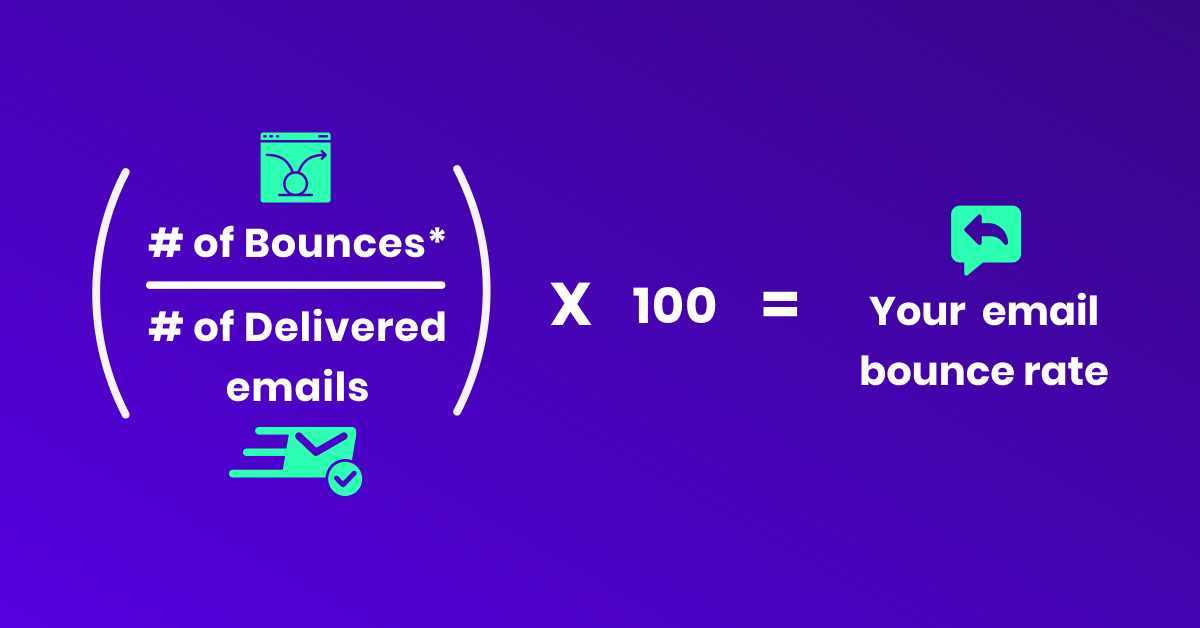
You just have to divide the number of bounces and the number of delivered emails. Then multiply it by 100.
So, what will you do with this metric?
This will help you identify emails that aren't active anymore.
Let's say you have a high bounce rate... then it might be the perfect time for you to update and capture new emails. Remove old and fake email addresses.
The next metric is...
3. Deliverability Rate
The deliverability rate determines the number of emails sent successfully to their recipients. This is an important metric to track because this proves that your emails are not vanishing into thin air.
If you have a high deliverability rate, it means that your recipients are receiving your emails.
If it's low, you might need to adjust some things... because here are some factors that affect your email marketing campaign's deliverability rate:
- Using free domain addresses
- Too many images
- Difficult unsubscription option
Make sure your emails are landing in their inbox so your effort won't go to waste!
Another metric you need to track is...
4. Click-Through Rate
Click-Through Rate is the average number of people who clicked on a link in your email. So, even if you have a high open rate, it will be better to have an excellent CTR, too.
It means that your subscribers are interacting with your emails.
And by the way, the average Click-Through Rate is 2.6%... so if you aim for a higher number, you're doing amazing!
The next email marketing metric you need to keep an eye on is...
5. Conversion Rate
There are different types of "conversion" for every business. It depends on the goal you have in your email marketing campaign.
If you're promoting a new collection on your ecommerce site, then conversion would mean subscribers purchasing your products.
This is an essential metric because, as business owners.
And that's why you're looking for an effective ecommerce email marketing strategy, right? Because one of your goals is making sales.
Another metric is...
6. Unsubscribe Rate
Having unsubscribers might not be the best thing that can happen in your email marketing campaigns... but they should not scare you!
Why? Because the reason you're tracking these metrics is to make some adjustments and optimization.
So, you need to keep an eye on this metric because if you get a high unsubscribe rate on a specific email, you can evaluate it to see what went wrong.
And last but not least...
7. List Growth Rate
A List Growth Rate is the growing rate of your list.
We can't stop some subscribers from leaving your email list for every email. But that's why you need to compute your List Growth Rate.
This is to identify the average number of people joining and leaving your email list. So, it's an important metric to track.
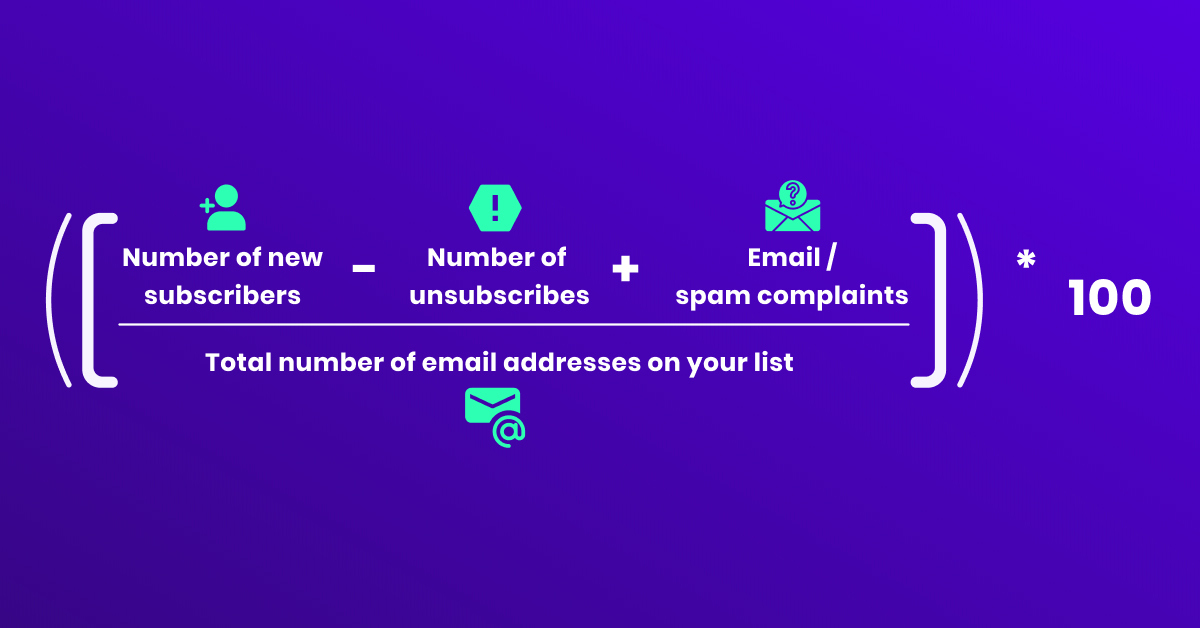
To make it clearer, this is an example:
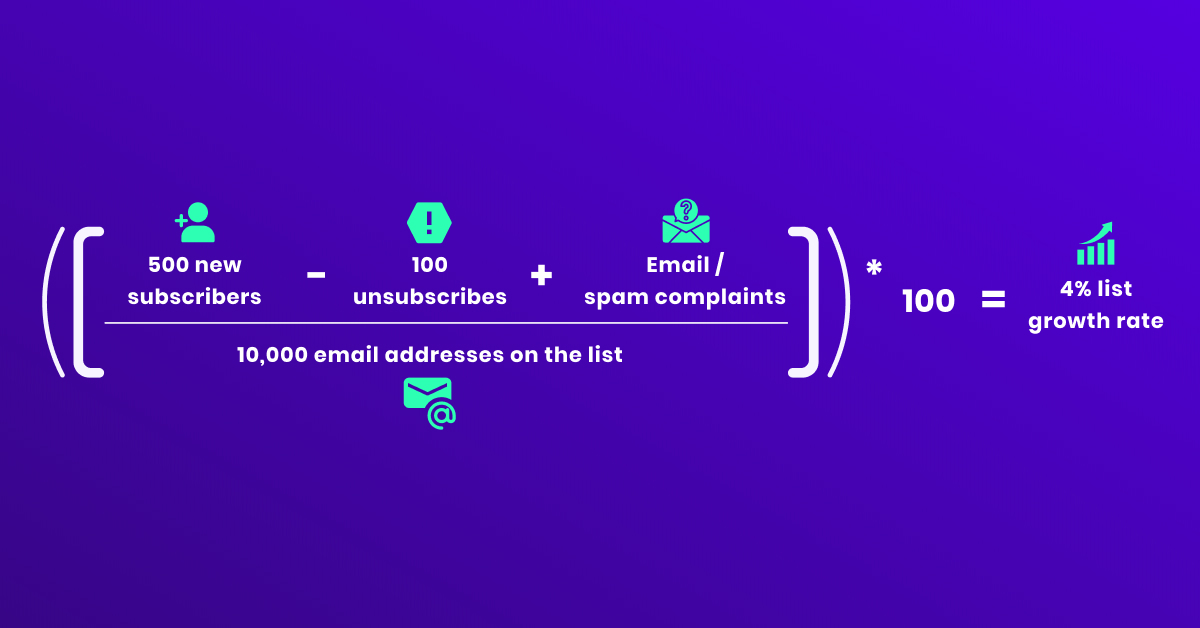
So now, what are you going to do with these metrics?
Boost Your Ecommerce Store's Conversion Rate Through Email Marketing!
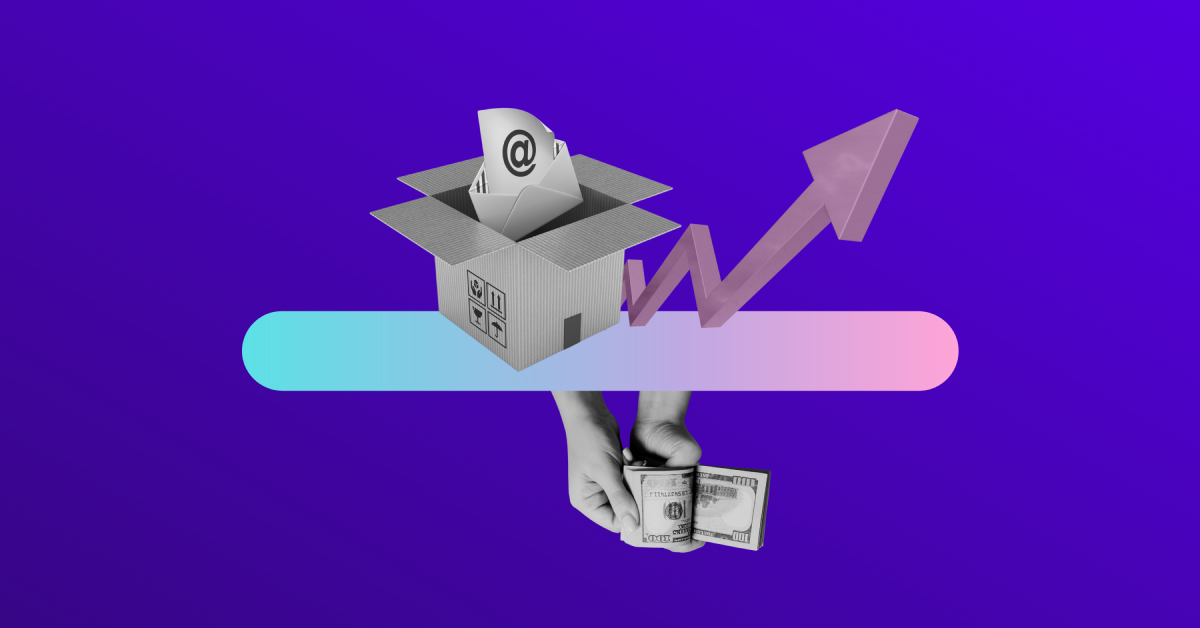
If you want to utilize email marketing and incorporate it into your digital marketing strategy... make sure to follow this complete guide to ecommerce email marketing.
So, you've already learned how to:
- Research About Ecommerce Email Marketing
- Check Email Regulations
- Define Your Audience
- Set Your Goal
- Plan Your Email Automation Workflow
- Find The Best Email Marketing Software
- Analyze Your Insights
- Optimize Your Strategies
- Write An Effective Email
These steps will help your online store succeed in email marketing. But remember, email marketing is a game you need to constantly play to master it.
So, there's always room for improvement.
And speaking of which, it's not only for your email marketing campaigns... because your website needs constant improvements, too.
Remember, once you win that click... you're driving people to your website!
Make sure you have a fast-loading, user-friendly ecommerce theme on your Shopify store when it happens.
But that's why Debutify is here to help you! Not only would it make your website look appealing, but it's also your Profit Optimization Partner.
It has 50+ Add-Ons that will optimize your profits, AOV, and conversions!
The best part?
You can add the Newsletter Pop-Up Add-On to help you gain email subscribers! ?
So, what are you waiting for?



 Ricky Hayes
Ricky Hayes

